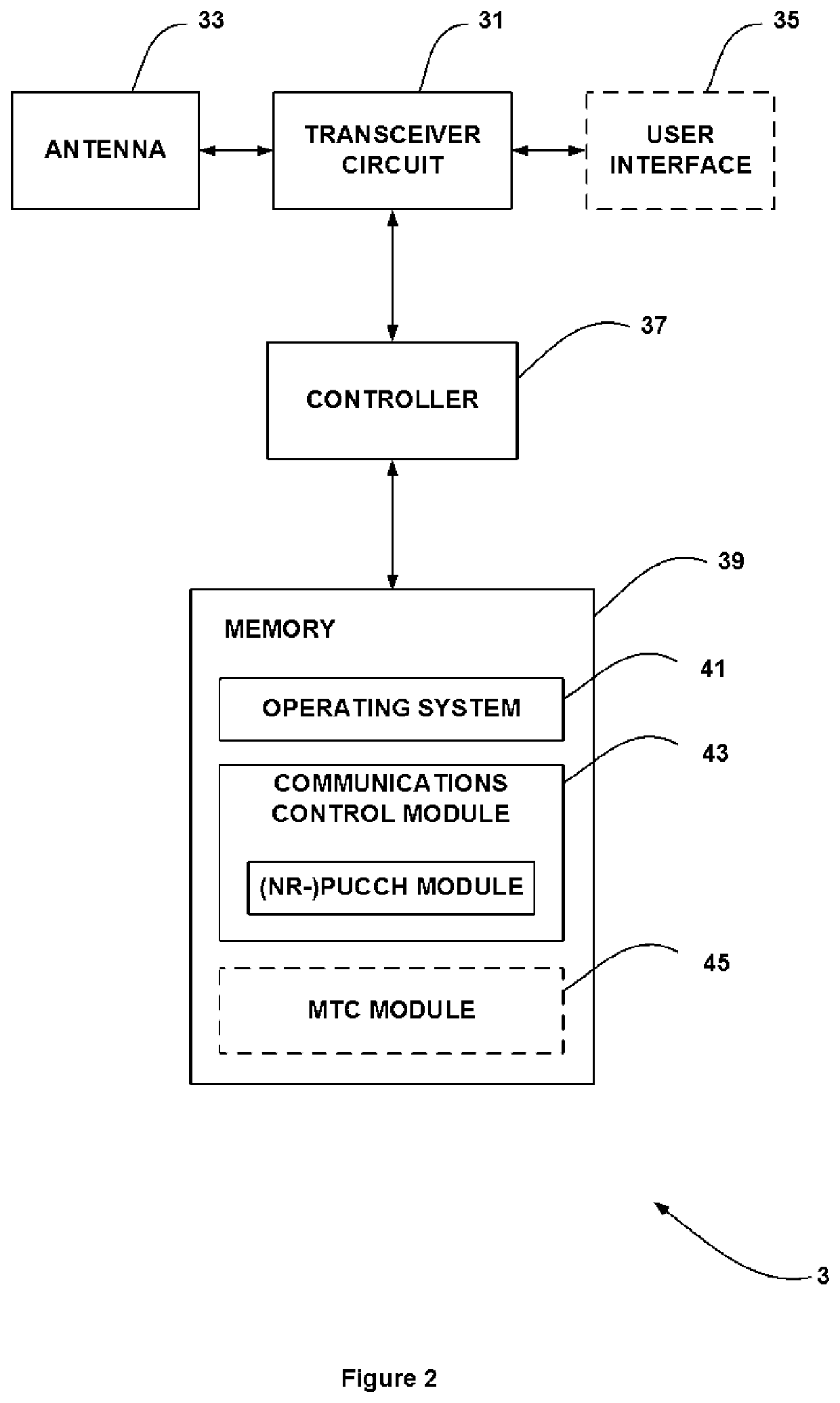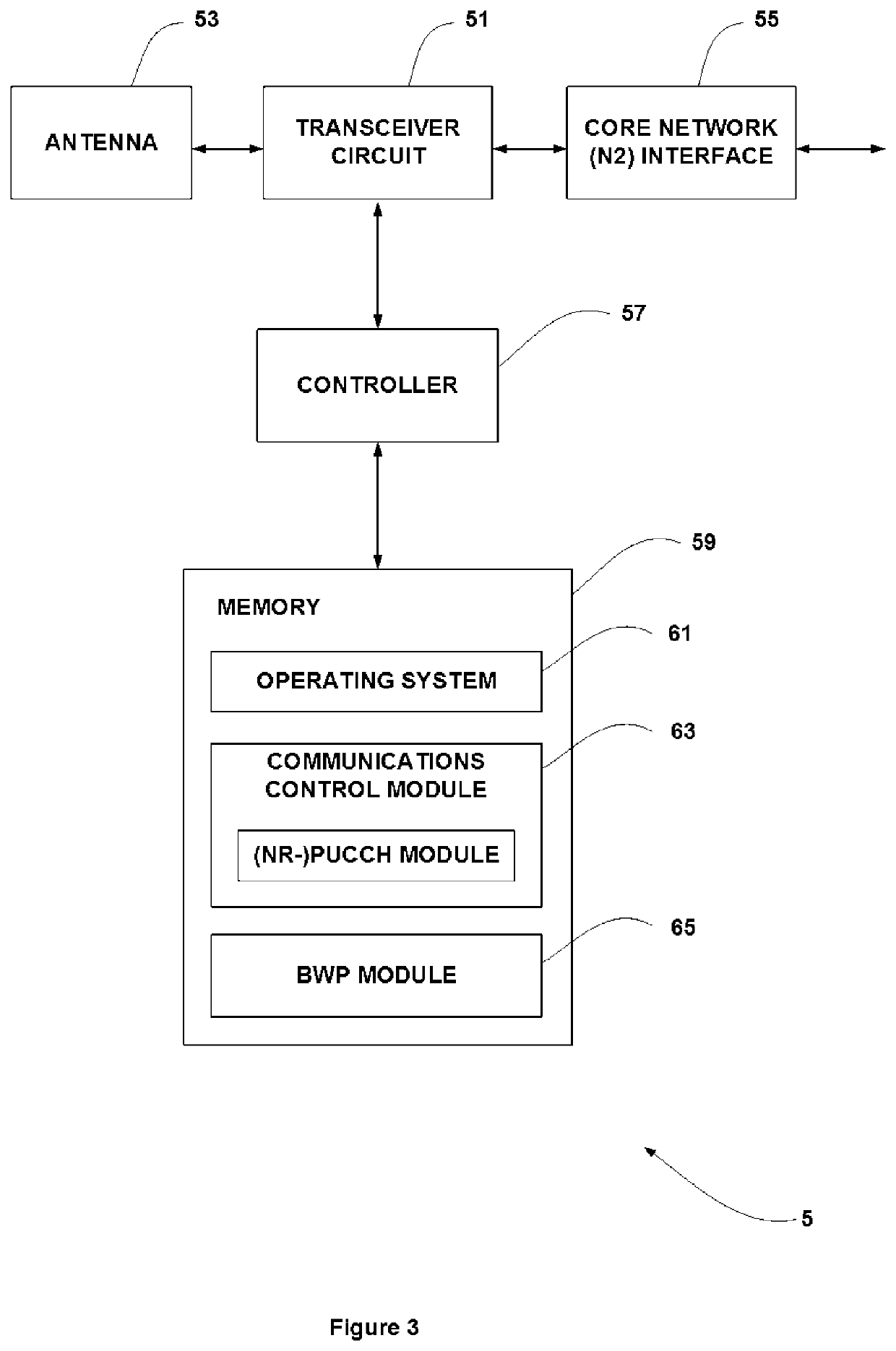Communication system
a communication system and communication system technology, applied in the field of communication systems, can solve the problems of inability to successfully receive all pucch data near the edge of the system bandwidth, inability to reuse existing (lte-specific) design in 5g nr systems, and inability to achieve the effect of ensuring efficiency and flexibility
- Summary
- Abstract
- Description
- Claims
- Application Information
AI Technical Summary
Benefits of technology
Problems solved by technology
Method used
Image
Examples
Embodiment Construction
[0027]FIG. 1 schematically illustrates a (cellular) telecommunications network 1 in which user equipment 3 (mobile telephones and / or other mobile devices) can communicate with each other via base stations 5 (e.g. a ‘gNB’ in NR networks) using an appropriate radio access technology (RAT). It will be appreciated that in 5G systems base stations are also referred to as including one or more transmit receive points (TRPs). As those skilled in the art will appreciate, whilst six mobile device 3 and one base station 5 are shown in FIG. 1 for illustration purposes, the system, when implemented, will typically include other base stations and mobile devices.
[0028]Each base station 5 operates one or more associated cells either via a TRP located at the base station (and / or one or more remotely located TRPs). In this example, for simplicity, the base station 5 operates a single cell having an associated system bandwidth. The base station 5 is connected to a core network 7 (e.g. via an appropri...
PUM
 Login to View More
Login to View More Abstract
Description
Claims
Application Information
 Login to View More
Login to View More - R&D
- Intellectual Property
- Life Sciences
- Materials
- Tech Scout
- Unparalleled Data Quality
- Higher Quality Content
- 60% Fewer Hallucinations
Browse by: Latest US Patents, China's latest patents, Technical Efficacy Thesaurus, Application Domain, Technology Topic, Popular Technical Reports.
© 2025 PatSnap. All rights reserved.Legal|Privacy policy|Modern Slavery Act Transparency Statement|Sitemap|About US| Contact US: help@patsnap.com



